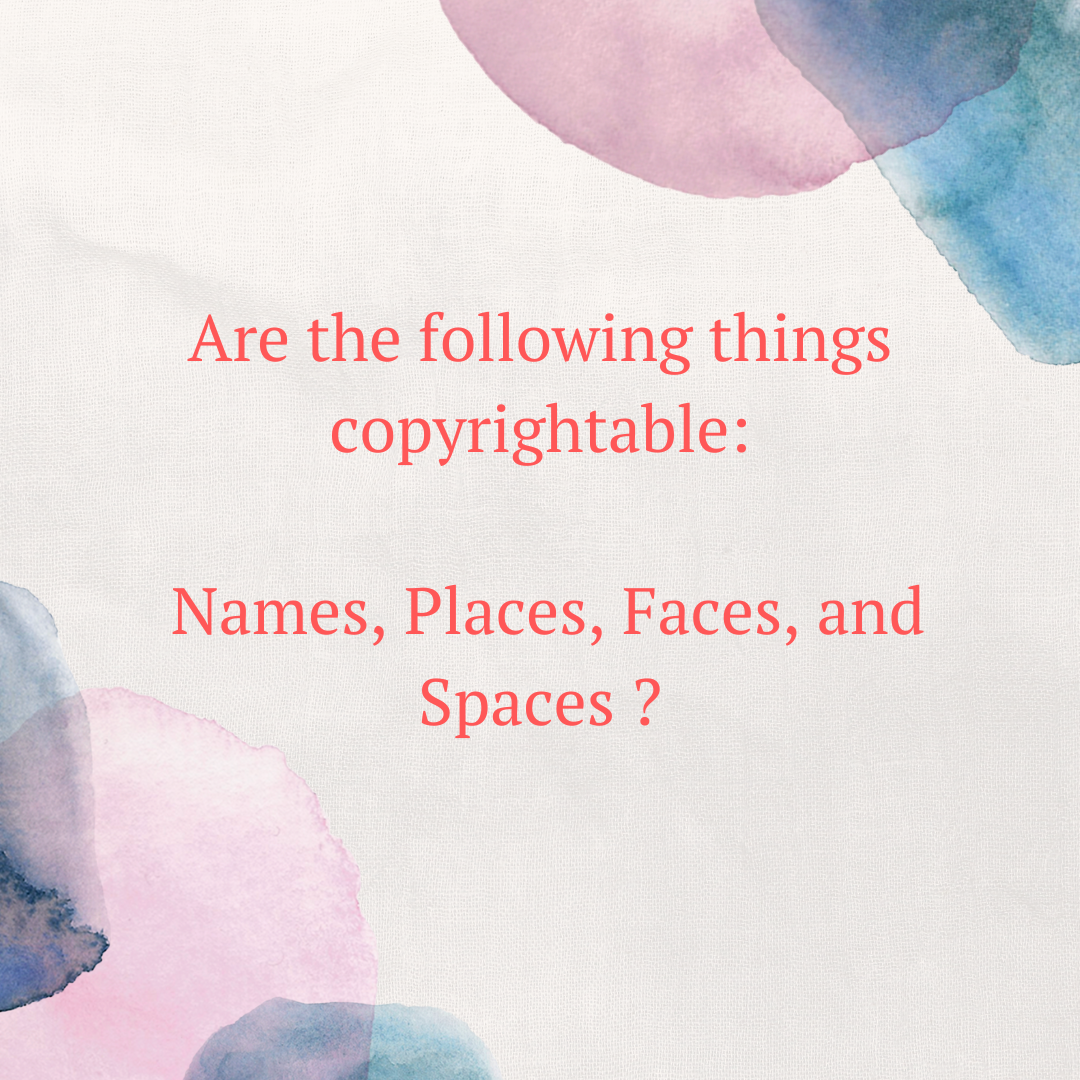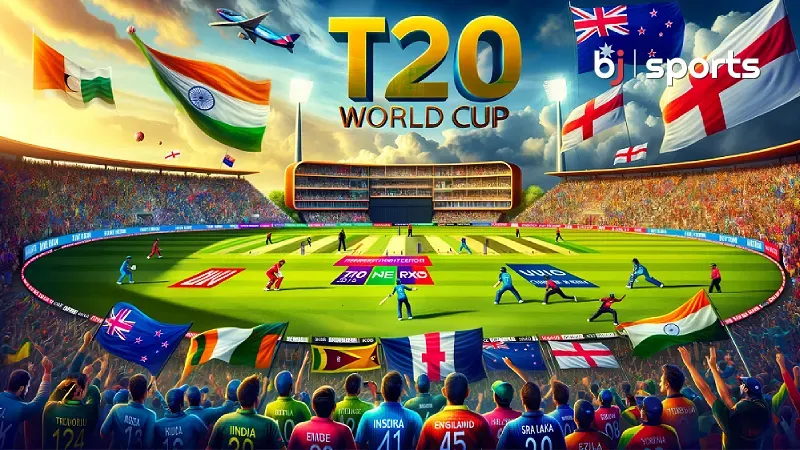Are the following things copyrightable: Names, Places, Faces and Spaces ?
Introduction
Copyright law is a complex and ever-evolving area of intellectual property that seeks to balance the protection of creative works with the promotion of innovation and the public interest. One of the questions that often arises in discussions about copyright is whether certain things like names, places, faces, and spaces are copyrightable. In this article, we will explore the copyrightability of these elements and shed light on the factors that determine their eligibility for copyright protection.
1. Names:
Names, such as personal names or the names of businesses, are generally not copyrightable. Copyright law primarily protects original creative works fixed in a tangible medium, and names do not fall into this category. However, names can be protected under trademark law, which is a separate area of intellectual property. Trademarks are used to identify and distinguish goods and services, and they can be registered to prevent others from using a similar name in a way that could cause confusion.
2. Places:
Places, such as cities, landmarks, or geographical locations, are not copyrightable. Copyright law does not extend to facts or ideas, and places are considered factual information. However, the creative expression of a place, such as an original photograph, painting, or fictional representation, can be copyrighted. For example, a photograph of the Eiffel Tower at night with unique lighting could be copyrighted because it represents a creative interpretation of the place.
3. Faces:
Faces, specifically human faces, are not copyrightable. Like names and places, faces are considered factual and not original creative works. However, photographs, paintings, or sculptures that depict faces can be copyrighted as artistic expressions. Additionally, images of famous individuals or public figures might be subject to privacy and publicity rights, which are distinct from copyright and vary from jurisdiction to jurisdiction.
4. Spaces:
Spaces, such as physical environments, are typically not copyrightable. Again, copyright protects original creative works, and spaces, in their natural state, are not considered original creative expressions. However, architectural works and designs can be copyrighted. Architects and designers can protect their unique architectural creations, but this protection does not extend to the space itself.
Examples
- The name “Google” is not copyrightable. However, Google has a trademark on the name “Google,” which means that Google has the exclusive right to use the name “Google” for certain goods and services.
- The place name “New York City” is not copyrightable. However, a photo or video of New York City may be protected by copyright.
- A person’s face is not copyrightable. However, a photo or video of a person’s face may be protected by copyright. Additionally, the person may have a right of publicity in their face, which means that they may be able to control the commercial use of their face.
- Spaces, such as the interior of a building or the layout of a park, are not copyrightable. However, a drawing, painting, or photograph of a space may be protected by copyright. Additionally, the architect of a building may have copyright protection in their architectural design.
Conclusion :
In summary, names, places, faces, and spaces are generally not copyrightable in and of themselves. Copyright law primarily applies to original creative works fixed in a tangible medium, and these elements do not fit that definition. However, various other forms of legal protection, such as trademark law, privacy rights, publicity rights, and architectural copyright, may apply to certain aspects of names, places, faces, and spaces. It is essential to understand the specific legal frameworks that govern these elements to ensure proper protection and compliance with the law. Copyright law, while a powerful tool for creators, has its limits, and a nuanced approach is necessary to navigate the various legal considerations surrounding these elements.
FAQs
Can music have more than one copyright owner ?
Yes, music can have more than one copyright owner. There are two main types of copyright in music: copyright in the composition and copyright in the sound recording.
Copyright in the composition protects the musical work itself, including the melody, harmony, and rhythm. This copyright is typically owned by the songwriter(s).
Copyright in the sound recording protects the specific performance of a musical work. This copyright is typically owned by the record label or the performing artist(s).
It is possible for different people to own the copyright in the composition and the copyright in the sound recording of the same musical work. For example, a record label may own the copyright in the sound recording of a song, but the songwriter(s) may still own the copyright in the composition. This is why you may sometimes see a song listed as being “written by” one person and “performed by” another person.
Examples of multiple copyright owners in music:
- A song written by two people would have two copyright owners for the composition.
- A song recorded by a band would have multiple copyright owners for the sound recording, one for each band member.
- A song that is sampled by another artist would have two copyright owners for the sound recording, one for the original artist and one for the sampling artist.
- A song that is covered by another artist would have two copyright owners for the composition, one for the original songwriter(s) and one for the cover artist.
What is copyright claim and strike ?
Copyright claim and copyright strike are two different terms that are often used interchangeably. However, there is an important distinction between the two.
Copyright claim
A copyright claim is a notification from a copyright holder that you have used their copyrighted material without permission. Copyright claims can be filed on a variety of platforms, including YouTube, social media, and websites.
When you receive a copyright claim, you have a few options:
- You can remove the copyrighted material from your content.
- You can dispute the claim if you believe that you have used the copyrighted material in a way that is allowed by copyright law, such as fair use.
- You can do nothing, in which case the copyright holder may choose to have your content removed from the platform.
Copyright strike
A copyright strike is a more serious consequence of copyright infringement. A copyright strike is issued when a copyright holder submits a legal removal request for using their copyright-protected content. When a copyright strike is issued, the video is removed from YouTube and the uploader’s channel may be suspended or even terminated.
If you receive a copyright strike, you have a few options:
- You can wait for the strike to expire after 90 days.
- You can get a retraction from the copyright holder.
- You can submit a counter notification if you believe that your video was removed by mistake or qualifies as fair use.
What are the examples of copyright ?
Copyright is a form of intellectual property that protects original works of authorship. It gives the copyright holder the exclusive right to reproduce, distribute, perform, display, and create derivative works from the copyrighted work.
Copyright protection is automatic upon creation of the work, and no registration is required. However, registration with the U.S. Copyright Office provides certain benefits, such as a public record of the copyright and the ability to file a copyright infringement lawsuit in federal court.
Examples of copyright
Copyright protects a wide range of creative works, including:
- Literary works, such as novels, short stories, poems, plays, and scripts
- Musical works, including sheet music, sound recordings, and lyrics
- Dramatic works, such as plays, musicals, and operas
- Pantomimes and choreographic works
- Pictorial, graphic, and sculptural works
- Motion pictures and other audiovisual works
- Architectural works
- Sound recordings
- Computer software
Copyright also protects certain types of factual works, such as non-fiction books, articles, and reports. However, copyright does not protect ideas, facts, or systems.
What is an example of a copyright symbol ?
The copyright symbol is © (the letter C in a circle). It is used to indicate that a work is protected by copyright. The copyright symbol is not required to be used in order for a work to be copyrighted, but it is a good way to give notice to others that the work is protected.
Here is an example of how to use the copyright symbol:
© 2023 TrendingNow24
This copyright notice indicates that the work was created in 2023 and that the copyright holder is TrendingNow24.
Can anyone issue a copyright claim on behalf of someone else ?
False. Anyone cannot issue a copyright claim on behalf of someone else.
Only the copyright owner, a person or entity who has an exclusive license to some part of the copyright, or an authorized agent of one of those can issue a copyright claim on behalf of someone else.
This is because copyright is a legal right, and only the copyright holder or their authorized agent has the right to enforce those rights. If someone else issues a copyright claim on behalf of someone else, they may be liable for damages if the claim is false.
For example, if you create a video and upload it to YouTube, only you have the right to issue a copyright claim if someone else copies your video without your permission. If someone else issues a copyright claim on your behalf, they may be liable for damages if the claim is false.




